5 Ideas for Safer Tool Setups and Handling
Safety has taken on a different meaning and emphasis over the last few months. But, safety in and around the shop has and always will involve careful handling of tooling, from holders to delicate cutters. We want to help ensure tooling is set up properly, cared for, and most importantly that the folks doing the work are kept safe during it all.
So, how can you keep tools performing and prevent injury? Here are a few ideas.
1. Reduce total tool interactions
It stands to reason, the fewer times someone handles a tool, the fewer chances they have to damage a tool or injure themselves. It may be the single best way to avoid injury during handling and setup. This is, of course, easier said than done. Better tool organization is one way to do it—have tools where they are supposed to be, not just flung into a bucket or random bin. Organization can be maintained with some old-fashioned due diligence or improved storage.
A more advanced and sure-fire way to reduce touches is with the help of a Tool Management Software System like INTELLIGO, which allows you to monitor tool count and tool life. Not only do you know exactly where tools are, but you can track when inspection or replacement is due. Another option is called a Simple Post Interface (SPI), which transfers precise and accurate tool measurements by printing a QR code that’s read by the SPI module at the machine control. This eliminates measuring, remeasuring and adjustments when the tool is used in a machine tool.
2. Explore embedded tooling technology
Technology, specifically connectivity, is contributing to the safe handling of tools. Boring heads are leading the way on this front. Early-generation digital boring heads have readouts on the tool itself, eliminating resetting and measuring as well as awkward and uncomfortable adjustments in the spindle. The less times hands go into machine housing, the better.
More advanced digital heads, like our EWE fine boring head paired with BIG KAISER’s app, make it easier to monitor and configure the head while assembling and running boring tools. As well as being able to read changes in cutting diameter, the app helps operators determine optimal cutting parameters from their tool assemblies. The app also logs historical adjustments. By eliminating past mistakes, operation is safer and more effective.
3. Avoid using homemade gear
We get it. Just about everyone in this business has a bit of a “maker” in them. We know how things operate, we work with our hands and we’re creative. All that said, resist the temptation to fashion something from things sitting around the shop to work with tools. Just like one tool is designed and built to work better for certain jobs, so is the supporting equipment or accessories. There’s not only a risk to performance, but also to the people using the homespun equipment.
The appropriately named cheater bar is a perfect example of this. Tightening holder nuts to the proper torque isn’t always easy, requiring a good amount of elbow grease. Instead of sticking a pipe on the end of a wrench for extra leverage, the right torque wrench, with bearings and/or a one-way clutch system makes tightening easier and safer.
4. Assemble tools outside the spindle
Tools come in all kinds of different shapes and sizes. Vises, on the other hand, aren’t so flexible. And using one hand to hold the tool and working with the other opens the door to all kinds of issues. When setting up tools in the tool room or at a bench, the slightest slip can put a hand in direct contact with sharp edges.
Don’t contort your hands or body to reach component or handle sharp, delicate cutters. Let the tool, its sharp components and tight pockets come to you instead. Dedicated tool assembly devices adapt for 360-degree access and rotation, different shank shapes and sizes.
5. Handle small components with extra care
They’re hard to handle, manipulate and even see details on some of the smallest cutters and tooling—often some of the sharpest pieces in the shop. Micro cutters, for example, require a different set of rules to avoid painful splinters or scrapes. Handling cutting tools that are smaller than a human hair requires not only new machining process considerations, but understanding the need for gentle handling of these fragile cutters.
The skills are learnable. The best shop owners commit to training operators in the specific skills needed in micromachining and pay close attention to any handling or maintenance guides that accompany cutters.
Another, maybe more common piece of equipment, collets can come in very small sizes, making it challenging to safely and accurately insert or remove them. This is another example of where a simple, inexpensive piece of equipment, like collet removers and ejectors, can eliminate the temptation to jam fingers into small sharp spaces.
Safety should always be a focus and it’s more than signs on the wall and training. The right equipment, all the way down to the tool component level, can play a role. Accidents big or small can put someone out of commission; there’s no reason for tooling to add to the risk.


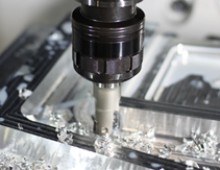




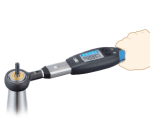

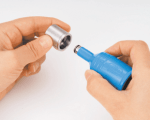


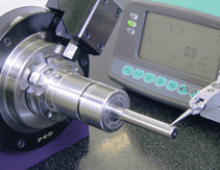
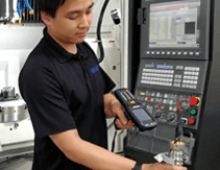








Did you find this interesting or helpful? Let us know what you think by adding your comments or questions below.